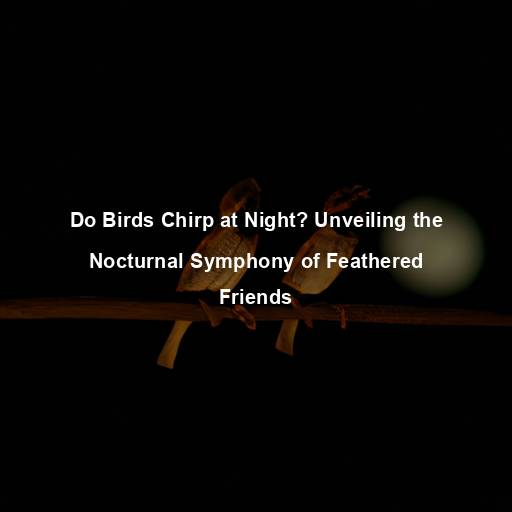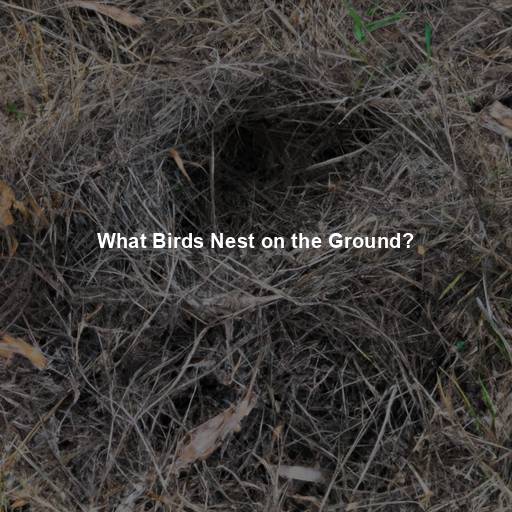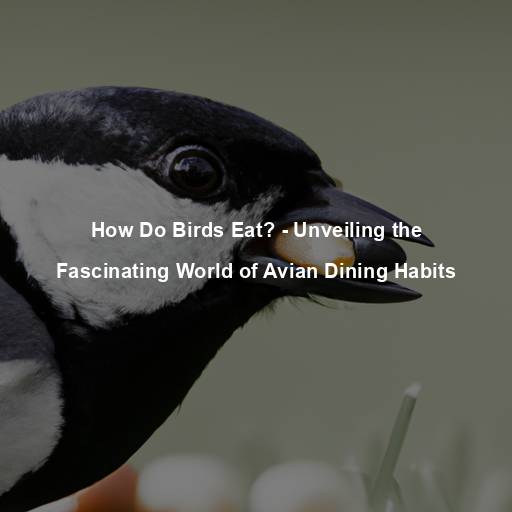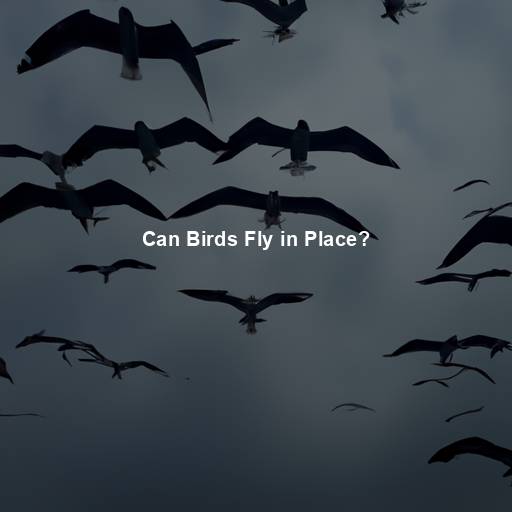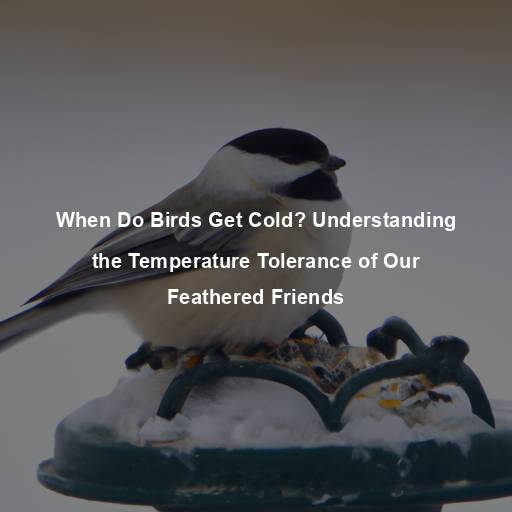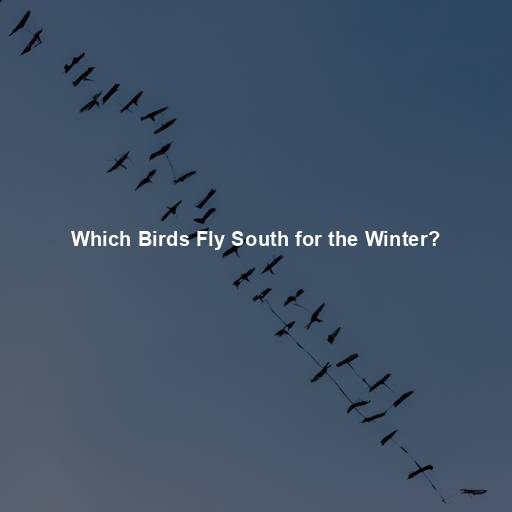Do Birds Chirp at Night? Unveiling the Nocturnal Symphony of Feathered Friends
Last Updated on November 3, 2023 by Evan
Contents
- 1 The Fascinating World of Avian Communication
- 2 The Diurnal Nature of Birdsong
- 3 The Enigma of Nocturnal Birdsong
- 4 The Science Behind Nocturnal Birdsong
- 5 Debunking Misconceptions: Nocturnal Birds vs. Urban Noise
- 6 The Wonders of Nocturnal Birding
- 7 Unveiling the Nocturnal Symphony
- 8 A World of Feathered Adaptations
- 9 Nocturnal Bird Vocalizations: A Language of the Night
- 10 The Influence of Environmental Factors
- 11 The Intricate Web of Nocturnal Communication
- 12 The Challenges of Studying Nocturnal Birdsong
- 13 Embracing the Mysteries of the Night
- 14 FAQs – Do Birds Chirp at Night?
The Fascinating World of Avian Communication
Throughout the ages, humans have been entranced by the mesmerizing beauty of birds and their enchanting melodies. Their vibrant feathers and melodious calls have left us in awe, as we marvel at the wonders of the natural world. While we are familiar with the familiar sounds of chirping and singing during the day, have you ever pondered if birds continue their symphony into the depths of the night? Do they serenade us under the moonlit sky, or do they grant respite to their melodious voices until the first rays of sunlight breach the horizon?
The Diurnal Nature of Birdsong
Before we embark on our nocturnal journey, it is essential to understand the diurnal nature of birdsong. Most bird species are diurnal, meaning they are active during the daylight hours and rest or sleep during the night. Their vocalizations serve various purposes, such as attracting mates, establishing territory, or communicating with their flock members. The dawn chorus, a lively and melodious symphony created by birds at daybreak, is a testament to their vibrant communication skills.
The Dawn Chorus: A Delightful Morning Serenade
One can only marvel at the captivating spectacle known as the dawn chorus, a favored treasure among avid bird aficionados across the globe. As the early rays of sunlight grace the horizon, a bustling wake-up call reverberates through the air, courtesy of our feathered friends emerging from their nocturnal respite. In a symphony of melodic chaos, the male bird population takes center stage, fervently serenading their potential mates with a harmonious proclamation of their existence. Such is the diversity that no avian voice goes unnoticed, as keen-eared ornithologists masterfully unravel the decipherable puzzle of species identification solely through the mystifying cadences of their songs.
The Daytime Communication Network
Throughout the day, birds continue to communicate through their songs, calls, and chirps. These vocalizations serve multiple functions, including territorial defense, warning signals, and coordination within a flock. They are an integral part of avian social behavior and play a vital role in the survival and well-being of bird communities.
The Enigma of Nocturnal Birdsong
Now that we have explored the diurnal aspects of bird communication, let us turn our attention to the enigma of nocturnal birdsong. While it is true that most birds are primarily active during the day, some species exhibit crepuscular or nocturnal behavior. These species, known as nocturnal birds, possess unique adaptations that allow them to navigate and communicate in low-light conditions.
Nocturnal Birds: Masters of the Night Sky
Nocturnal birds, such as owls and nightjars, have evolved remarkable adaptations to thrive in the darkness. Their exceptional night vision, enhanced hearing, and specialized feathers enable them to hunt and communicate effectively during nocturnal hours. While their vocalizations may not be as prominent or complex as those of diurnal birds, they do engage in some level of communication during the night.
The Purpose of Nocturnal Vocalizations
As the sun sets and darkness envelops the world, a mysterious symphony begins to unfold. While the dawn chorus is known for its vibrant melodies, the nocturnal vocalizations of birds take on a different purpose altogether. Under the cover of night, these feathered creatures communicate in their own unique ways, creating an enigmatic tapestry of sounds. Some use their nocturnal calls to maintain contact with their mates or offspring, weaving a delicate thread of connection amidst the obscurity.
The Nighttime Symphony: A Subtle Serenade
As the sun sets and darkness envelops the world, a mysterious and enchanting melody fills the air, orchestrated by the elusive nocturnal birds. Their haunting hoots and melodious chirps intertwine with the night’s symphony, casting a spell of awe and fascination upon those who listen. These delicate vocalizations serve as a poignant reminder of the intricate adaptations that birds have developed to thrive in their unique nocturnal habitats.
The Science Behind Nocturnal Birdsong
Birds chirping at night has long been a subject of fascination and curiosity. Exploring the scientific realm of avian vocalizations unravels a captivating world of bioacoustics, unveiling the complexities behind their melodic symphonies. This intriguing study unveils the intricate vocal repertoire of our feathered friends and delves into the enigmatic factors that shape their nighttime behavior, leaving us in awe of their mesmerizing communication methods.
Circadian Rhythms and Hormonal Influences
Birds, like humans and many other animals, have internal biological clocks that regulate their daily activities. These circadian rhythms dictate when birds sleep, wake, and engage in vocalizations. Hormonal influences, such as the release of testosterone in male birds during the breeding season, also play a significant role in the intensity and frequency of their vocalizations.
Environmental Triggers and Adaptations
In the vast darkness of the night, a hidden symphony unfolds as creatures unleash their secret melodies. From the whispers of the wind to the chants of frogs and the haunting calls of owls, the nocturnal world is teeming with surprising vocalizations. Baffling as it may seem, these creatures possess an innate ability to gauge their environment, adjusting their vocal prowess to the ever-changing dance of light, temperature, and the lurking presence of their adversaries. And deep within their vocal anatomy lies the key to their nocturnal triumph, with specialized vocal sacs and enigmatic sounds crafted to pierce through the darkness and establish their rightful place in the mysterious realm of the night.
Debunking Misconceptions: Nocturnal Birds vs. Urban Noise
One common misconception surrounding nocturnal bird vocalizations is their potential confusion with urban noise pollution. As human activities continue to encroach upon natural habitats, the sounds of traffic, machinery, and artificial lighting become prevalent in the night. While it is true that these sounds can mask or interfere with bird vocalizations, there is a distinct difference between urban noise and the subtle sounds of nocturnal birds.
Distinguishing Nocturnal Birdsong
In the realm of avian studies, expert observers and passionate bird enthusiasts possess a remarkable ability to discern between the melodious symphony of the dusk and the discordant cacophony of the urban jungle. Amidst the bewildering soundscape that surrounds us, the vocalizations of nocturnal birds reveal themselves as a labyrinthine tapestry of intricate patterns, beguiling rhythms, and enigmatic frequencies. Through careful and astute observation, the astute listener is drawn into the mesmerizing harmonies crafted by these shadowy denizens of the nocturnal realm, a testament to the boundless wonders of the natural world.
The Wonders of Nocturnal Birding
As our journey into the captivating realm of nighttime birdsong reaches its zenith, it becomes imperative to unveil the enigmatic joys that await avid birding enthusiasts under the nocturnal canopy. Traditionally, the realm of birdwatching has been inextricably linked to the vibrant hues of the day, yet venturing into the darkness can unleash an intoxicating tapestry of avian secrets. Armed with a sharp auditory acumen, a luminous beacon to pierce the shadows, and an unwavering sense of adventure, intrepid nocturnal birders have the privilege to peer into the concealed world of owls, nightjars, and other ethereal creatures who thrive in the moonlit embrace.
Embracing the Nighttime Symphony
Nocturnal birding allows us to immerse ourselves in the captivating symphony of the night. Listening to the hoots, chirps, and trills of nocturnal birds in their natural habitat is a humbling experience that connects us to the wonders of the natural world. It reminds us of the vast diversity of life on our planet and the intricate ways in which each species has adapted to survive and thrive.
Preserving Nocturnal Habitats
As our world keeps evolving, it becomes ever more vital to appreciate the intricate interplay between nature and human actions. The delicate harmony of ecosystems relies on our consciousness in preserving the sanctuaries of nocturnal creatures, particularly our feathered friends who thrive under the moonlit sky. By addressing the luminous outpourings that disrupt their delicate melodies, conserving the untouched wilderness, and embracing sustainable travel, we can cultivate a future where the nocturnal symphony captivates generations yet to come while preserving the very essence of our nocturnal allies.
Unveiling the Nocturnal Symphony
Delving into the depths of the avian realm, we uncover a captivating phenomenon: the secret world of nocturnal birdsong. Though most of our feathery friends favor the light of day, a select few embark on a bewitching journey of vocalization under the moon’s gentle glow. Shedding light on the veiled intricacies of their adaptations and dispelling common misconceptions, we unravel the enigma that is the nocturnal symphony. So, dear reader, as you wander beneath the sparkling night sky, lend an ear to the ethereal melodies that dance through the darkness, for a glimpse into the mesmerizing world of nocturnal birds awaits.
A World of Feathered Adaptations
Birds are remarkable creatures that have evolved a wide array of adaptations to thrive in their respective habitats. When it comes to nocturnal birds, their unique features and behaviors enable them to navigate and communicate effectively in low-light conditions. Let’s delve deeper into the fascinating adaptations that nocturnal birds possess.
Enhanced Night Vision
Did you know that nocturnal birds possess a remarkable adaptation that sets them apart? It’s their extraordinary night vision! These fascinating creatures have eyes specially crafted to excel in minimal light conditions. They boast a greater concentration of rod cells within their retinas, which are responsible for detecting light and movement.
Specialized Feathers for Silent Flight
Did you know that some birds have a remarkable ability to fly silently? Take owls, for example. These creatures have developed specialized feathers with fringed or serrated edges that help break up the airflow and minimize turbulence, resulting in near-silent flights. Isn’t it fascinating how they have adapted to hunt without giving away their position?
Keen Hearing Abilities
Nocturnal birds rely heavily on their acute hearing abilities to locate prey and communicate in the darkness. Their auditory systems are finely tuned to detect subtle sounds and locate the source with precision. Some species, like the Barn Owl, have facial discs that help funnel sound waves towards their ears, allowing for enhanced hearing even in complete darkness.
Nocturnal Bird Vocalizations: A Language of the Night
While the vocalizations of nocturnal birds may not be as prominent or complex as those of their diurnal counterparts, they still engage in various forms of communication during the night. Let’s explore the different types of vocalizations exhibited by nocturnal birds and their significance.
Hooting: The Signature Sound of Owls
Owls, the iconic nocturnal birds, are renowned for their distinctive hooting vocalizations. These deep, resonant calls serve multiple purposes, including territory defense, mate attraction, and communication with their offspring. Each owl species has its unique hoot, allowing for species recognition within the darkened forest.
Chirping and Trilling: The Nightjar’s Melodies
When darkness falls, a hidden chorus awakens, filled with the haunting melodies of the enigmatic nightjars. These elusive birds, whispered tales of goatsuckers, cast a spell over the moonlit landscapes with their enchanting vocalizations. Their songs, a harmonious blend of chirps and trills, unravel a mysterious soundscape, captivating all who dare to listen. Ornithologists have discovered that the nightjars serenade to mark their territories and seduce potential partners, with the males indulging in elaborate musical performances to woo the females under the starry canopy.
Whistling and Croaking: The Sounds of Frogs and Night Herons
As the moon rises and the stars twinkle overhead, the mysterious symphony of the night comes alive with a burst of indescribable sounds. You may expect to hear the hoots of owls or the enchanting melodies of nightjars, but prepare to be perplexed. For hidden among these creatures of the night are bird species with a surprising talent – they mimic the calls of other creatures, like frogs or croaking. Picture the moment when a night heron’s croaking call resonates through the darkness, or when certain rails produce whistling vocalizations that resemble the distant croak of a frog.
The Influence of Environmental Factors
Unlocking the enigma of nocturnal bird vocalizations takes us on a bewildering journey through the intricate interplay of internal and external forces. While we often attribute these melodies solely to the whims of their mysterious internal world, we must also unravel the enigmatic influence of their surroundings. In this captivating expedition, let us delve into the labyrinth of environmental factors that curiously shape the symphony of nocturnal birds, leaving us beguiled by the complexity of their melodic perplexity.
Moonlight and Ambient Light Levels
The mysterious dance of light in the nocturnal realm has unveiled a bewildering revelation – the hushed whispers of the night birds are orchestrated by the luminous moon. As the moon casts its ethereal glow upon the world, the avian creatures succumb to a symphony of silence, their vocal prowess dimming as if overshadowed by the moon’s celestial spotlight. Yet, when night’s dark cloak envelops the land, these nocturnal troubadours find solace in song, their melodious cries piercing the obsidian abyss, creating an otherworldly chorus that reverberates through the enigmatic darkness.
Temperature and Seasonal Variations
The vocal behavior of nocturnal birds isn’t just influenced by their innate instincts and mating strategies, but also by temperature fluctuations and seasonal transitions. As the breeding season kicks in and competition intensifies, male birds go all out and crank up their vocalizations to woo potential mates and safeguard their precious territories. However, it’s not just the time of year that affects their tunes – the surrounding temperature plays a part too. Some species of nocturnal birds find their voices thriving during balmy nights, while others keep the decibels down when the chill sets in.
Predators and Competitors
It’s truly fascinating to observe how the vocal behavior of nocturnal birds can be so deeply influenced by the presence of both predators and competitors. When faced with a perceived threat, these birds turn up the volume on their vocalizations, almost as if they’re issuing a warning or asserting their dominance. This incredible display of communication serves as a powerful deterrent, letting any potential intruders know that they mean business and that encroaching upon their territory won’t be taken lightly.
The Intricate Web of Nocturnal Communication
Nocturnal bird vocalizations are not isolated events but are part of a larger communication network within the nocturnal ecosystem. Let’s explore the different facets of nocturnal avian communication and how it contributes to the survival and success of these remarkable creatures.
Maintaining Pair Bonds
In the realm of nightlife, the symphony of nocturnal birds resonates with a deeper purpose. These avian lovebirds engage in a harmonious duet, their melodious voices intertwining like a dance, strengthening their connection and orchestrating their lives in perfect harmony. These vocal arrangements not only serve as a language between them but also act as a potion of unity, amplifying their social bond and enhancing their chances of creating the next generation of feathered wonders.
Parent-Offspring Communication
When it comes to the world of night-time melodies, nocturnal birds take the spotlight with their captivating vocalizations. These elusive creatures rely on their unique calls to establish a vital link between parents and offspring during the nesting season. Through a mesmerizing symphony of sounds, adult birds seek out and connect with their young ones, ensuring their well-being and delivering much-needed guidance. In return, fluffy chicks employ their own enchanting vocalizations to cunningly capture the attention of their guardians, heralding the arrival of mealtime or the pursuit of safety.
Territory Establishment and Defense
The nocturnal realm echoes with a cacophony of vocalizations, as birds navigate the enigmatic dance of establishing and safeguarding their territories. Through their ethereal melodies, these avian creatures assert their sovereignty over coveted domains, sending forth a sonorous proclamation of ownership. These exquisite vocal displays act as a siren call, alerting potential interlopers to tread carefully and steering the course away from needless skirmishes. As the breeding season unfurls its tantalizing promise, the passionate symphony crescendos, casting a beguiling spell of competition as birds vie for love and shield their precious nesting sanctuaries.
The Challenges of Studying Nocturnal Birdsong
Exploring the enigmatic realm of nocturnal birds’ vocalizations has perplexed the minds of seasoned researchers and curious ornithologists alike. The cloak of darkness veiling their melodious secrets, coupled with their elusive behavior, has cast an insurmountable challenge on accurately capturing and deciphering their harmonious symphonies. Nevertheless, the luminous beacon of technological advancements and innovative research methods has unveiled precious glimpses into the intricate tapestry of nocturnal birdsong, unraveling the mysterious allure that shrouds their melodious communication in the night.
Bioacoustic Monitoring
Bioacoustic monitoring, which involves the use of specialized recording equipment, has revolutionized the study of nocturnal bird vocalizations. Researchers deploy autonomous recording units (ARUs) in strategic locations to capture and analyze the vocalizations of nocturnal birds over extended periods. This technology allows scientists to gather valuable data on vocal patterns, species distribution, and community composition within nocturnal habitats.
Spectrogram Analysis
Spectrogram analysis is another powerful tool used to study the vocalizations of nocturnal birds. By converting audio recordings into visual representations, researchers can examine the frequency, duration, and intensity of different vocalizations. This method enables precise identification of species and provides insights into the complexities of their vocal repertoire.
Embracing the Mysteries of the Night
Delving into the enigmatic world of nighttime bird communications, we are astounded by the kaleidoscope of voices and the remarkable flexibility displayed by our avian friends. The gentle nocturnal melodies that reverberate through the shadows bring with them stories of resilience, romance, and territorial boundaries. As we embrace the captivating mysteries that unfold under the moon’s tender gaze, our reverence for the intricate tapestry of life grows ever deeper.
A Symphony in the Shadows
As the moon takes center stage and the stars twinkle above, a hidden concert unfolds in the realm of darkness. The chorus of birds, usually softer and more mysterious during nighttime hours, whispers a bewildering tale of resilience and adaptability. From the haunting hoots of owls to the mesmerizing trills of nightjars, every note contributes to a complex web of sounds, weaving an enchanting tapestry that captivates our senses. In this nocturnal symphony, the avian world unveils its true colors, transforming the night into a captivating canvas where surreal melodies come to life.
Preserving the Nocturnal Realm
As our world expands and encroaches upon the homes of our feathered friends, it’s more important than ever to appreciate the value of their nighttime realm. The survival of these unique and captivating nocturnal birds relies on our ability to address the issue of light pollution, conserve their crucial habitats, and prioritize sustainable practices. By taking a stand and protecting their nocturnal homes, we not only preserve the delicate equilibrium of the night but also embrace the enchantment of their melodic voices for future generations to marvel at.
FAQs – Do Birds Chirp at Night?
Do birds chirp at night?
Contrary to popular belief, the majority of birds refrain from their melodious performances after the sun sets. Chirping, a delightful symphony we associate with the avian world, is predominantly reserved for the daylight hours. These feathered creatures, being creatures of the day, engage in their tuneful conversations as a means of conveying messages and staking their claim on limited domains, a dance in pursuit of romantic connections or simply to mark their precious territories. The nocturnal hours bring a period of serenity and tranquil reprieve to our winged friends, as they rest and rejuvenate for the dazzling chorus that awaits at dawn.
Are there any exceptions?
While most birds are inactive and silent during the night, there are some exceptions. Certain species of birds, such as nightingales, thrushes, and mockingbirds, are known for their nighttime singing. These birds are considered crepuscular, meaning they are most active during the twilight hours at dawn and dusk. Their melodious songs can be heard in the early morning or late evening, adding a beautiful natural soundtrack to those specific times of the day.
Why do some birds chirp at night?
In the mysterious realm of avian symphonies, there exists a captivating phenomenon: birds that enliven the nocturnal soundscape with their enchanting songs. These feathered troubadours have gracefully adapted to the shroud of darkness, their melodious melodies serving myriad purposes. For some, this twilight serenade is an intimate communication with their beloved, a way to affirm their bond amidst the veiled canopy. Others, audaciously bold, rely on their nocturnal chorus to assert territorial dominion, a declaration of sovereignty in a world awaken by the moon’s gentle glow. Yet, whispers of courtship, sweet and beguiling, intermingle with this night symphony, as these vocal virtuosos woo and seduce potential partners amidst the deep shadows. And dare we forget the unsuspecting victims of civilization’s intrusion, as artificial luminosity pierces the ebony veil, pushing these avian virtuosos into a perplexing state of disarray, where day and night intertwine, and their songs become a lonesome quest for rhythm.
What are the benefits of night singing for birds?
Nighttime singing can offer advantages for birds in specific habitats or environmental conditions. By singing at night, birds may be able to find mates more effectively in dim light or during periods of low visibility. Additionally, for territorial birds, nighttime singing can help them defend their territory from intruders when other species are less active, allowing them to utilize acoustic communication to prevent conflicts with neighbors.
Can birds chirping at night be a sign of something wrong?
When the moon casts its shimmering glow upon the world, one might expect hushed whispers and gentle rustling to accompany the stillness of the night. However, amidst this tranquil ambiance, an uncommon symphony emerges – the mysterious serenade of birds. These melodious creatures, known for their daytime chatter, may find themselves compelled to sing in the darkness, their voices echoing through the silence. Yet, these nocturnal performances may not be cause for celebration, as they could be a cry for help, a plea for understanding. It is in these moments of perplexity that we must become keen observers, unraveling the secrets that lie beyond the moonlit treetops, seeking guidance from experts who comprehend the language of feathers and songs.
How can birds chirping at night affect humans?
There’s something beautifully perplexing about the ethereal symphony of nocturnal birdsong that pervades our nights, lulling us into a blissful state of tranquility. It’s as if nature herself is whispering sweet melodies to us, guiding us into a peaceful slumber. But what happens when this enchanting chorus becomes disruptive, shattering the serenity of our sleep? Suddenly, the bursts of chirping that once brought solace now become an unpredictable source of frustration, leaving us perplexed and desperately seeking solutions. Should we shut our windows and shut out the world, or resort to earplugs, hoping to muffle the inconvenient cacophony? Or perhaps, in our quest for rest, we should embrace ingenious soundproofing techniques to create an oasis of tranquility within our own walls.

